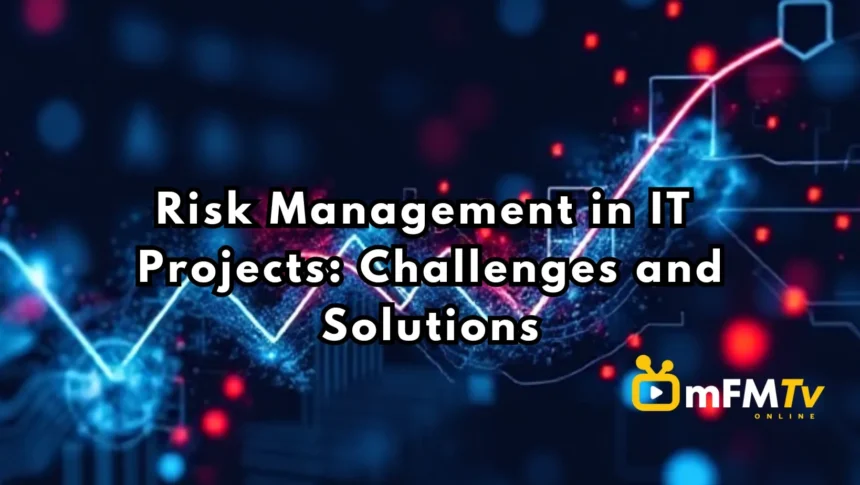Risk management is a critical component of Information Technology (IT) project management. IT projects are often complex, involving diverse teams, cutting-edge technologies, tight timelines, and dynamic requirements. Without proper risk management, these projects can face delays, cost overruns, or even complete failure.
In this article, we’ll explore the common challenges in managing risks within IT projects and provide actionable solutions. By following effective risk management practices, IT teams can minimize disruptions, ensure project success, and deliver high-quality outcomes.
Understanding Risk Management in IT Projects
Risk management involves identifying, analyzing, and mitigating potential issues that could negatively impact a project. In IT projects, risks often arise from technical, organizational, and external factors. Effective risk management helps project managers:
- Identify threats early.
- Mitigate potential damage.
- Optimize resources for better decision-making.
Common Challenges in IT Project Risk Management
- Rapidly Changing Technologies
IT projects often involve new or evolving technologies. This can lead to unforeseen technical challenges or incompatibilities. Example: Migrating legacy systems to the cloud may uncover unexpected issues with data integration or security. - Unclear Project Requirements
Ambiguous or changing requirements create uncertainty. Stakeholders may have different expectations, leading to scope creep or misalignment. Example: An e-commerce project may initially require basic features but later expand to include complex AI-based recommendations. - Resource Constraints
Limited budgets, tight deadlines, and inadequate staffing can increase project risks. Lack of skilled personnel may hinder progress. Example: A cybersecurity project delayed due to the unavailability of experienced penetration testers. - Communication Gaps
Poor communication among stakeholders, developers, and management can cause delays or misinterpretations. Example: A mobile app development team misinterprets the client’s requirement for user interface design. - Cybersecurity Threats
IT projects often involve handling sensitive data, making them vulnerable to breaches or hacking. Example: A project deploying a healthcare app faces a data breach, exposing patient records. - Regulatory and Compliance Risks
Projects must comply with industry standards and regulations. Non-compliance can lead to penalties and reputational damage. Example: An IT project for a financial institution fails to meet GDPR requirements, resulting in legal issues.
Solutions to Overcome IT Project Risk Management Challenges
- Comprehensive Risk Assessment
Conduct a thorough risk analysis during the planning phase. Use tools like SWOT analysis, risk matrices, or brainstorming sessions to identify potential issues. Best Practice: Regularly update the risk register to reflect new findings and changing circumstances. - Clear Requirements Documentation
Define project requirements in detail and secure stakeholder approval before starting development. Utilize agile methodologies to accommodate changes incrementally. Best Practice: Use tools like JIRA or Trello for better requirement tracking and management. - Resource Allocation Planning
Allocate sufficient resources, including skilled personnel, budget, and time. Build a contingency buffer for unexpected challenges. Best Practice: Leverage outsourcing or hiring temporary specialists to address skill gaps. - Enhanced Communication
Establish clear communication protocols, regular meetings, and collaboration platforms like Slack or Microsoft Teams to ensure alignment. Best Practice: Use visual tools like Gantt charts to provide stakeholders with progress updates. - Strengthened Cybersecurity Measures
Implement robust security protocols, conduct regular vulnerability assessments, and educate the team about cyber threats. Best Practice: Use multi-factor authentication (MFA), data encryption, and compliance tools to enhance security. - Compliance Monitoring
Stay updated on regulatory requirements and integrate compliance checks into the project lifecycle. Best Practice: Appoint a compliance officer or use automated tools to ensure adherence to standards.
Benefits of Effective Risk Management in IT Projects
- Enhanced Project Success Rates: Addressing risks early reduces the likelihood of failures.
- Improved Stakeholder Confidence: Transparent risk management fosters trust among stakeholders.
- Optimized Resource Utilization: Mitigation strategies prevent wastage of time and money.
- Adaptability: Teams can respond quickly to unforeseen changes.
Conclusion
Risk management in IT projects is not just a preventive measure; it is a strategic enabler of success. By understanding the challenges and implementing robust solutions, IT teams can deliver projects on time, within budget, and with high-quality outcomes.
Embrace effective risk management practices, and transform potential obstacles into opportunities for innovation and growth.




